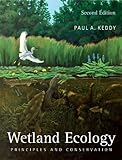Wetland Ecology : principles and conservation / Paul A. Keddy.
Material type: TextPublication details: New York : Cambridge University Press, c2010.Edition: 2nd edDescription: xvi, 497 p. : ill. (some col.), maps (some col.) ; 26 cmISBN:
TextPublication details: New York : Cambridge University Press, c2010.Edition: 2nd edDescription: xvi, 497 p. : ill. (some col.), maps (some col.) ; 26 cmISBN: - 9780521519403 (hbk)
- 9780521739672 (pbk.)
- 577.68 22 KED
| Item type | Current library | Call number | Status | Barcode | |
|---|---|---|---|---|---|
 Books
Books
|
Hamu Mukasa Library Open Access / General collection; Level 1 | 577.68 KED (Browse shelf(Opens below)) | Available | 148955 | |
 Books
Books
|
Hamu Mukasa Library Open Access / General collection; Level 1 | 577.68 KED (Browse shelf(Opens below)) | Available | 148956 |
Browsing Hamu Mukasa Library shelves,Shelving location: Open Access / General collection; Level 1 Close shelf browser (Hides shelf browser)

|

|

|

|

|

|

|
||
| 577.015118 BAR Environmental Modeling : a practical introduction / | 577.015118 BAR Environmental Modeling : a practical introduction / | 577.68 KED Wetland Ecology : principles and conservation / 2nd ed. | 577.68 KED Wetland Ecology : principles and conservation / 2nd ed. | 577.68 WET Wetlands : archaeology and nature conservation / | 577.88 GOT A Primer of Ecology / 4th ed. | 577.88 GOT A Primer of Ecology / 4th ed. |
Machine generated contents note: Preface to the second edition; Preface to the first edition; Acknowledgments; 1. Wetlands: an overview; 2. Flooding; 3. Fertility; 4. Disturbance; 5. Competition; 6. Herbivory; 7. Burial; 8. Other factors; 9. Diversity; 10. Zonation: shorelines as a prism; 11. Services and functions; 12. Research: paths forward; 13. Restoration; 14. Conservation and management; Index.
"Richly illustrated and packed with numerous examples, this unique global perspective introduces wetland ecology from basic principles to advanced applications. Thoroughly revised and reorganised, this new edition of this prize-winning textbook begins with underlying causal factors, before moving on to more advanced concepts that add depth and context. Each chapter begins with an explanation of the basic principles covered, illustrated with clear examples. More difficult concepts and exceptions are introduced only once the general principle is well-established. Key principles are now discussed at the beginning of the book, and in order of relative importance, enabling students to understand the most important material without wading through complex theory. New chapters on wetland restoration and wetland services draw upon practical examples from around the world, providing a global context, and a new chapter on research will be particularly relevant to the advanced student planning their own studies"--
There are no comments on this title.
